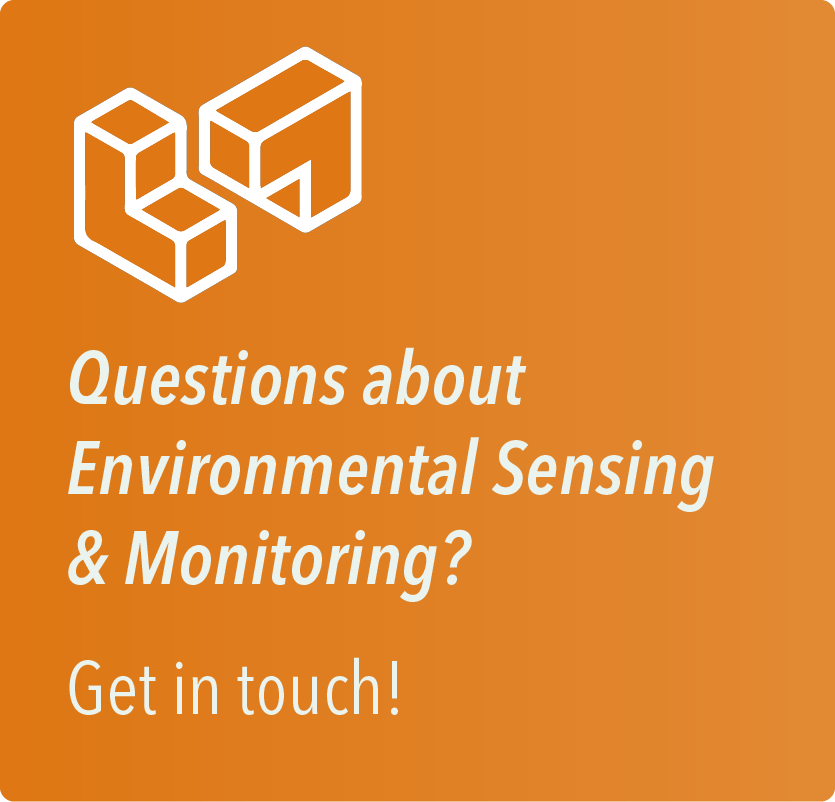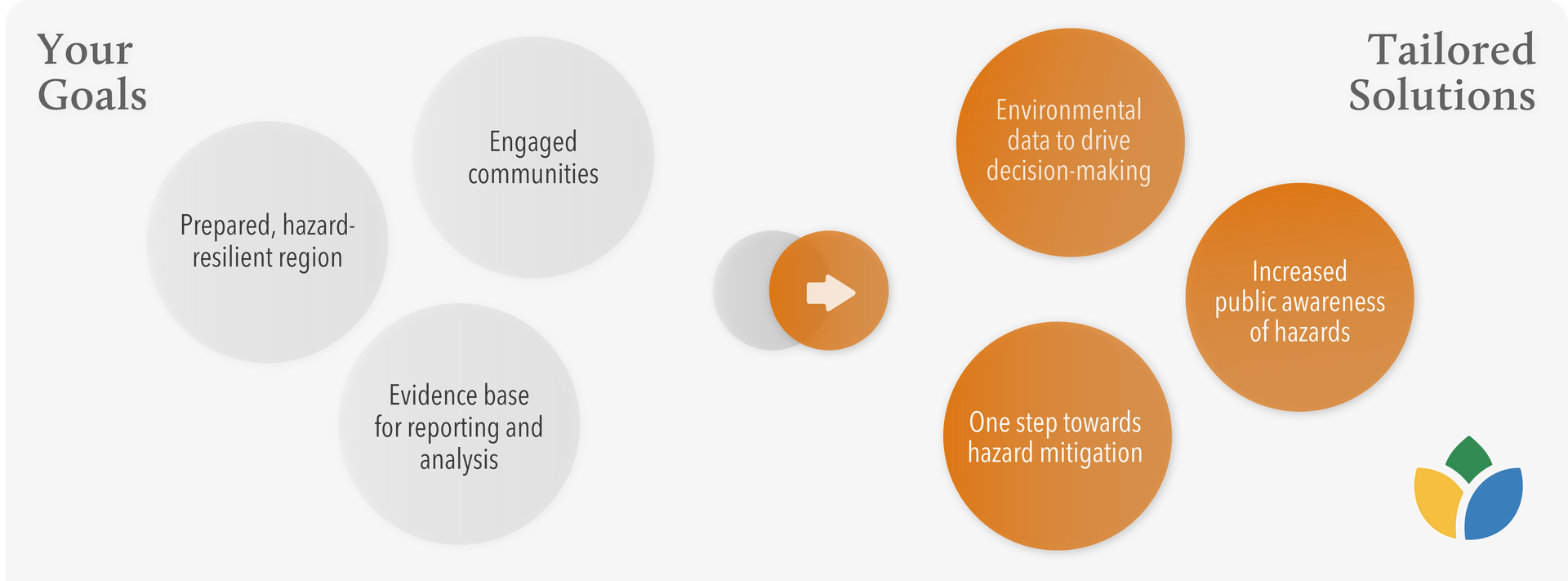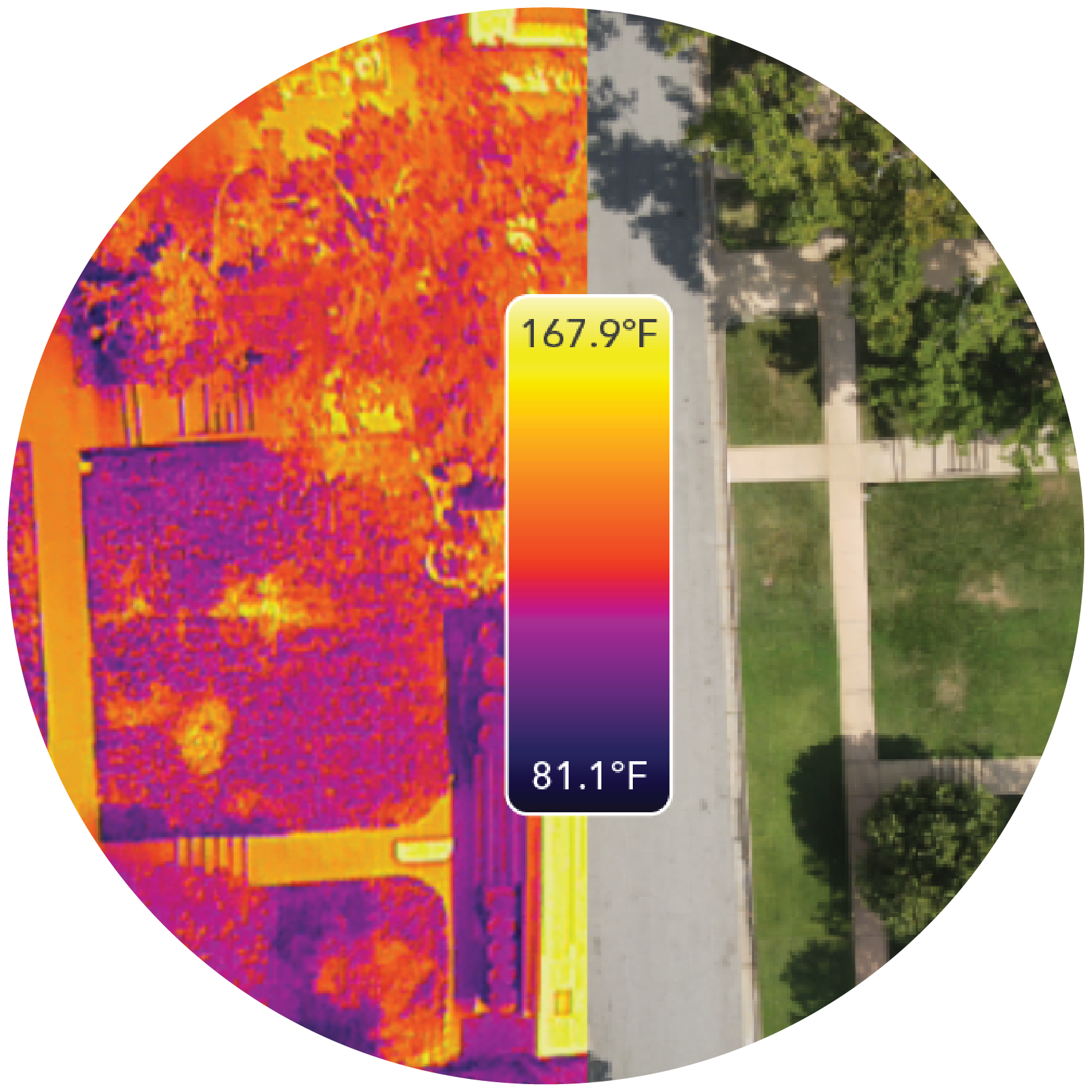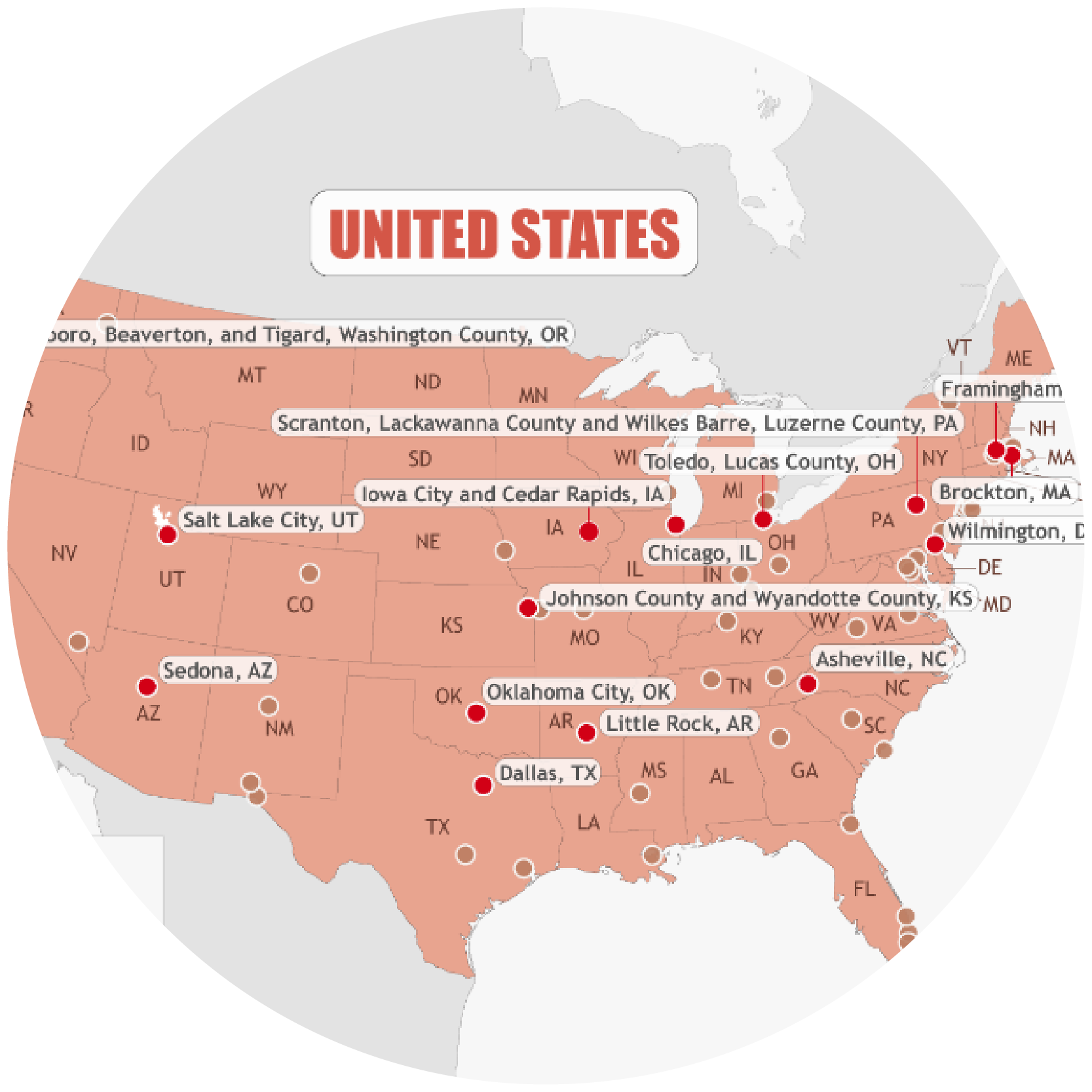Environmental Sensing & Monitoring
As the impacts from natural hazards worsen, scientific observation and monitoring of environmental hazards is essential to determine who is at risk and at what severity. The involvement of community in generating such evidence bases is integral to CAPA's approach to environmental sensing and monitoring. From personal exposure to parcel-level, city-wide, and regional assessments, CAPA's environmental monitoring solutions can be tailor fit to a variety of scenarios and purposes. Our abilities include urban heat island mapping, indoor and personal monitoring, air quality monitoring, and remote sensing, with wide applications of data from emergency preparedness and response to mitigation and adaptation planning.

Heat Mapping
Engage with local partners and community members to develop a data collection campaign and map heat across a community, city or region.

Heat Watch Sensor
The CAPA Heat Watch Sensor is a highly accurate air monitoring device that captures air temperature, relative humidity and GPS.
Air Quality Monitoring
Deploy a network of particulate matter (PM) sensors to better understand the distribution of PM1, PM2.5 and PM10 across a study area.
Site Scale Assessments
Do you have your own sensor and community-based monitoring project in mind? Work with us to co-design a study, lease sensors, and develop a unique project. Monitor site-level changes through development; assess weatherization impacts on residences; monitor personal exposure at work places with wearable sensors. Utilize CAPA's expertise from dozens of community-based monitoring campaigns to co-design an effective scientific study.
Tirana, Shkodra, & Vlora, Albania
Community Mapping in Albania
CAPA conducted a multi-part hazard assessment on extreme heat and air quality in three cities across Albania (Tirana, Shkodra and Vlora) through the World Bank Group’s Global Facility for Disaster Reduction and Recovery (GFDRR). Teaming up with local researchers and university students, the teams collected mobile temperature and heat index data as well as particulate matter measurements across three hot campaign days over the summer of 2023. The data collection teams also visited several key places of interest across each using FLIR thermal imagery cameras and surveys to gather site-level impressions of heat, shade, and potential intervention activities. A StoryMap describing the effort and results is available here.
Oklahoma City, OK
Heat Watch Oklahoma City
As part of the 2023 CAPA/NIHHIS Urban Heat Island mapping campaign, the City of Oklahoma City conducted a heat and air quality monitoring campaign that engaged over 100 community volunteers as data collectors. The results indicated a nearly 15°F simultaneous disparity between warmest and coolest areas across the City. As part of the air quality activities, local partners installed AirBeam particulate matter sensors for a three-week period at fire department stations spread across the City as well as at local Department of Environmental Quality regulatory stations. CAPA’s analysis determined several areas that saw elevated and sustained levels of air pollution that are considered unhealthy for certain groups of people. The heat and air quality reports are available here; The project also entailed several policy analyses (more information and results soon available here)
Various Locations
Center for Collaborative Heat Monitoring
In its sixth year of an ongoing public/private partnership with the National Oceanic and Atmospheric Administration’s National Integrated Heat Health Information System (NOAA-NIHHIS), CAPA is supporting the implementation of its Heat Watch program across 30 communities over the summers of 2025-2028. Building on over 100+ field campaigns, communities will engage in indoor monitoring, developing hazard monitoring plans, and long-term assessments of impacts from natural hazards. Learn more about the Center for Collaborative Heat Monitoring here.


Joey Williams
Manager
Joey directs operations of the CAPA Heat Watch program and assists with organizational growth of CAPA. He combines his process design skills with a passion for environmental human health.






